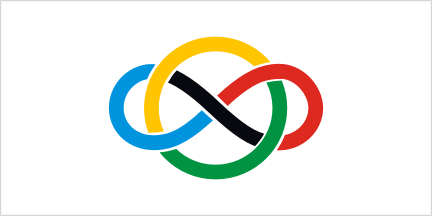RMO/INMO Doubt Board

Hi Guys since most of us are preparing for RMO everyone must be having doubts in some question or another. This board is open to all to ask/answer questions on topics included in RMO/INMO/IMO.
Do Reshare it so other members can see this Board.
No vote yet
1 vote
Easy Math Editor
This discussion board is a place to discuss our Daily Challenges and the math and science related to those challenges. Explanations are more than just a solution — they should explain the steps and thinking strategies that you used to obtain the solution. Comments should further the discussion of math and science.
When posting on Brilliant:
*italics*or_italics_**bold**or__bold__paragraph 1
paragraph 2
[example link](https://brilliant.org)> This is a quote# I indented these lines # 4 spaces, and now they show # up as a code block. print "hello world"\(...\)or\[...\]to ensure proper formatting.2 \times 32^{34}a_{i-1}\frac{2}{3}\sqrt{2}\sum_{i=1}^3\sin \theta\boxed{123}Comments
Please Help.
Log in to reply
@Calvin Lin Can you help me with this question. It seems pretty difficult.
Log in to reply
It's not too hard, use techniques in Construction
Hint: 2 is the only even prime.
Hint: Bertrand's postulate tells us that between n and 2n, there is a prime.
Log in to reply
Draw the angle bisectors of the lines AB and CD. Let these lines be L1 and L2.
Then in general, XY will cut each of these lines in one point each. These two points are equidistant from AB and CD as they lie on the angle bisectors.
There will be only one point if XY is parallel to either of L1 or L2 and thus intersects only one of them.
Log in to reply
There will be one such point also when XY will be passing through O
Log in to reply
Clearly, for positive x and y,
4x4+4y3+5x2+y+1>6x2+6y2≥12xy (By A.M. - G.M. inequality)
I don't think the equality holds though. Kindly check the question again @Shivam Jadhav
Log in to reply
It doesn't. That's why I got this question wrong. >.<
Its wrong from the source itself.
The question is from GMO
Log in to reply
First, consider the following Lemma,
Lemma: For positive x and y, the following inequality holds,
xy(xlnx+ylny)≥lnx+lny
The equality case being x=y=1
Proof: We'll divide the proof into three cases,
Case 1: x,y≥1
⟹lnx,lny≥0
⟹xlnx≥lnx
&
ylny≥lny
⟹xlnx+ylny≥lnx+lny
⟹xy(xlnx+ylny)≥lnx+lny (∵x,y≥1)
Similarly, we can proceed with other two cases, i.e.,
Case 2: x,y<1
Case 3:x<1,y>1
This proves our Lemma. □
Now, using the Lemma, we have,
ab(alna+blnb)≥lna+lnb
⟹lna×(a−ab1)+lnb×(b−ab1)≥0
⟹(a−c)×lna+(b−c)×lnb≥0 (∵abc=1)
⟹alna+blnb−c×(lna+lnb)≥0
⟹alna+blnb+clnc≥0 (∵abc=1⟹lna+lnb+lnc=0)
⟹ln(aabbcc)≥0
⟹aabbcc≥1
⟹ab+cba+ccb+a≤1
Q.E.D.
Log in to reply
OR use weighted AM-GM and then just AM-GM ._. Still like the unique approach. :o
Here's a much simpler solution -- We can rewrite the LHS of the inequality as (ac)^b (ab)^c (bc)^a = 1/(a^a b^b c^c) (replacing all the ab's with 1/c's etc.). Now suppose, WLOG, a >= b >= c. Since they multiply to one, a >=1 and c <=1, hence a^a >= a^b (because b <= a), c^c >= c^b, hence a^b b^b c^c >= a^b b^b c^b = 1. Thus 1/(a^a b^b c^c) <= 1.
Find 1!12+2!12+22+3!12+22+32+........∞=?
Log in to reply
We can write the following as a summation
k=0∑∞6n!n(n+1)(2n+1)61k=0∑∞n!2n3+3n2+n31k=0∑∞n!n3+21k=0∑∞n!n2+61k=0∑∞n!ne(35+22+61)617e
Log in to reply
do u have any generalisation for this r=0∑∞r!rn
Is the answer 617e
Log in to reply
yes, plz post ur soln ???
@Rajdeep Dhingra i'm waiting for ur solution
Log in to reply
@Tanishq Varshney I will write just write the function then u can find its Summation.
Summation of first n squares = n(n+1)(2n+1)/6 so the above series can be written as
n(n+1)(2n+1)/6(n!). Find its summation answer will be 17e/6
Log in to reply
u mean 6n!n(n+1)(2n+1)
Log in to reply
Yeah, sorry for typo edited.
Log in to reply
Good question. I show you where I have reached.
We need to solve this equation to get the value of nn2=ω2n−1
Log in to reply
there is no +ve value of n
Log in to reply
That's what even I said in the above comment in which I have posted the solution.
Log in to reply
i didn't read the comments carefully, sorry for that :)
Log in to reply
No Problem.
is there any answer to this?? its very well clear that -1 satisfies the equation but how to find the smallest possible integer, i am clueless
Log in to reply
I have solved it !!!!!! I am Posting the solution.
(1+ω)n=ωnsquaring both sides(1+ω2+2ω)n2=ω2nωn2=ω2ncubing both sides ω3n6=ω6n→n6=1The smallest solution of this over the reals and satisfying the equation is -1 , son=−1
Just curious : How did you get IMO rank 1. I mean do they tell the Rank. I thought they just gave gold medal.
BTW Congratulations for making it to INMO. Any guidance you could give me ?
Log in to reply
the required answer is positive , so what can be n, thats the question is asking for. IS there any possible answer.??
Log in to reply
Well there is no possible positive answers as I think the solutions to my equation is 1 or -1. Trying 1 is not giving the correct answer so -1 is what we are left with. Rest are complex solutions.
Getting gold medal means 1st rank. Solve my set whose name is hard
Log in to reply
Any guidance for me ?
Log in to reply
Use book excursion in mathematics
Log in to reply
Anything other ?
cant find it on flipkart
[Z] is complex number. [ |Z| = |Z+1| = 1 ] and [ Z^ {2} = (Z +1) n] Here [n] is a positive integer. find minimum value of [n].
Find all natural n > 1 for which sum 22+32+....+n2 equals to pk where p is prime and k is natural.
also find gcd(2002 + 2, 2002^2 + 2, 2003^3 + 2,...)
hi guys if you mind my question, how to become like you guys? i mean really good at mathematics? I ranked no.1 in our town and school (btw, my real age is 16) but i dont know where to start. I really want to solve those olympiad-like problems out there... Thanks in advance
Log in to reply
Try out books like Mathematical Olympiad Challenges by Titu Andreescu or Mathematical Olympiad treasures by the same, Problem solving by Arthur Engel, Rajeev Manocha, Thrills of Pre-College Mathematics( haven't really used it but people say it's good ). Keep practicing RMO papers over and over again and if you have the courage, try out questions from China's Olympiads too.
Question:Consider two circles S and R.Let the center of circle S lie on R.Let S and R intersect at A and B.Let C be a point on S such that AB=AC.Then prove that the point of intersection of AC and R lies in or on S.
Solve for x and y. x+xy+y=11 and xy(x+y)=30. Please provide a detailed solution.
prove that 11x31x61 divides 20^15-1